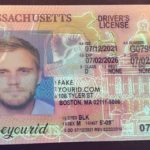Introduction
The issue of fake IDs has long – been a concern for various sectors, and as we approach 2025, the threat they pose to businesses is growing at an alarming rate. Fake IDs are not just a matter of underage individuals trying to gain access to age – restricted venues; they have far – reaching implications for businesses across different industries.
The Scope of the Fake ID Problem
Fake IDs are becoming increasingly sophisticated. With the advancement of technology, counterfeiters are able to produce IDs that are difficult to distinguish from genuine ones. In 2025, it is expected that the market for fake IDs will continue to expand, with new methods of production and distribution emerging.
These fake IDs are being used for a variety of purposes. One of the most common is for underage drinking. Bars, nightclubs, and liquor stores are constantly at risk of being deceived by individuals using fake IDs to purchase alcohol. However, the problem extends beyond the hospitality industry. Retail stores may be targeted by individuals using fake IDs to make large – scale purchases, especially of high – value items, which can then be resold or used in other illegal activities.

Impact on Different Business Sectors
Hospitality and Entertainment
For bars, nightclubs, and restaurants, fake IDs pose a significant legal and financial risk. If a business serves alcohol to a minor using a fake ID, it can face severe penalties, including hefty fines, loss of its liquor license, and even legal action. Additionally, there are safety concerns. Minors in these environments can be more vulnerable to harm, and businesses can be held liable for any incidents that occur.
Entertainment venues such as concert halls and theaters may also be affected. Fake IDs can be used to gain unauthorized access to age – restricted events, leading to overcrowding and potential security breaches.
Retail
In the retail sector, fake IDs can be used for identity theft – related fraud. Criminals may use a fake ID to open credit accounts in someone else’s name, make large – value purchases, or return stolen items for a refund. Retailers may suffer significant financial losses as a result. Moreover, the reputation of the store can be damaged if customers’ personal information is compromised due to fake ID – related fraud.
Financial Services
Banks and other financial institutions are also at risk. Fake IDs can be used to open accounts, apply for loans, or engage in other financial transactions. This can lead to financial losses for the institution and its customers, as well as regulatory issues if proper identity verification procedures are not followed.
How Fake IDs are Produced and Distributed
Fake ID production has become a well – organized business. Counterfeiters use a variety of techniques, from using high – quality printers and scanners to replicate security features of real IDs, to 3D printing for more complex designs. Some even go as far as to use stolen or hacked databases to obtain legitimate identity information, which is then used to create more convincing fake IDs.
Distribution of fake IDs is also a complex network. The internet has made it easier for counterfeiters to sell their products. Online marketplaces, both on the surface web and the dark web, are used to advertise and sell fake IDs. They are often shipped discreetly, making it difficult for law enforcement to intercept them.
Businesses’ Current Defense Mechanisms
Many businesses are already taking steps to combat the threat of fake IDs. In the hospitality industry, staff are trained to check IDs carefully. This includes looking for common signs of a fake ID, such as poor – quality printing, incorrect font usage, or missing security features. Some establishments also use ID scanners, which can quickly detect if an ID is genuine or not by checking its magnetic stripe or RFID chip for accurate information.
Retailers may have their own identity verification processes. For high – value purchases or when opening new accounts, they may require additional forms of identification, such as a utility bill or a second government – issued ID. Financial institutions have more sophisticated identity verification systems, including multi – factor authentication and background checks.
Challenges in Detecting Fake IDs
Despite the efforts of businesses, detecting fake IDs is not without its challenges. The increasing sophistication of fake IDs means that some counterfeits are almost indistinguishable from real ones, even to trained eyes. ID scanners can also be fooled by high – quality fake IDs that have been programmed to mimic the data of a real ID.
Another challenge is the sheer volume of IDs that businesses have to process. In a busy bar or a large retail store, it may not be feasible to conduct a thorough inspection of every ID presented. This can lead to fake IDs slipping through the cracks.
Future – Proofing Businesses Against Fake ID Threats
To future – proof against the growing threat of fake IDs in 2025 and beyond, businesses need to invest in more advanced technologies. Biometric identification methods, such as fingerprint or facial recognition, can provide a more secure way of verifying identities. These technologies are difficult to counterfeit and can be integrated into existing point – of – sale or access control systems.
Businesses should also collaborate more closely with law enforcement agencies. Sharing information about fake ID trends, counterfeiting techniques, and suspicious transactions can help law enforcement to crack down on the production and distribution of fake IDs. Additionally, industry associations can play a role in setting standards and best practices for ID verification across different sectors.
Common Problems and Solutions
Problem 1: Difficulty in Training Staff to Detect Fake IDs
Many businesses struggle to train their staff effectively to spot fake IDs. New counterfeiting techniques emerge regularly, and it can be challenging to keep staff updated.
Solution: Provide regular and in – depth training sessions for staff. Use real – life examples of fake IDs and demonstrate the latest counterfeiting techniques. Encourage staff to ask questions and provide feedback during the training process. Additionally, offer refresher courses at regular intervals to ensure that staff knowledge remains up – to – date.
Problem 2: High – Quality Fake IDs Fooling ID Scanners
As fake IDs become more sophisticated, some are able to bypass ID scanners, which rely on certain data – matching algorithms.
Solution: Invest in more advanced ID – scanning technologies that use multiple verification methods, such as optical character recognition in combination with hologram and microprinting checks. Regularly update the software of ID scanners to keep up with the latest counterfeiting trends and improve their accuracy in detecting fake IDs.
Problem 3: Online Distribution of Fake IDs
The internet has made it easy for counterfeiters to distribute fake IDs, and it can be difficult for businesses to trace the source of these fake IDs.
Solution: Collaborate with law enforcement agencies and online platforms to take down websites and marketplaces that sell fake IDs. Use digital forensics techniques to track the IP addresses and other digital footprints of counterfeiters. Businesses can also report any suspicious online activity related to fake IDs to the relevant authorities.
Problem 4: Balancing Customer Service with ID Verification
Businesses may be concerned that strict ID verification procedures may slow down service and lead to customer dissatisfaction.
Solution: Implement efficient ID – verification processes that can be carried out quickly without sacrificing accuracy. Train staff to be polite and professional when asking for ID verification. Consider using self – service ID – verification kiosks in high – traffic areas, which can speed up the process while still ensuring proper identity checks.
Problem 5: Lack of Standardization in ID Verification
There is a lack of uniform standards for ID verification across different industries, which can lead to inconsistent practices.
Solution: Industry associations should work together to develop and promote standard ID – verification guidelines. These guidelines should cover aspects such as the types of IDs accepted, the level of inspection required, and the use of ID – scanning technologies. By following these standards, businesses can improve their overall security and reduce the risk of fake ID – related fraud.
Fake ID Pricing
unit price: $109
| Order Quantity | Price Per Card |
|---|---|
| 2-3 | $89 |
| 4-9 | $69 |
| 10+ | $66 |



